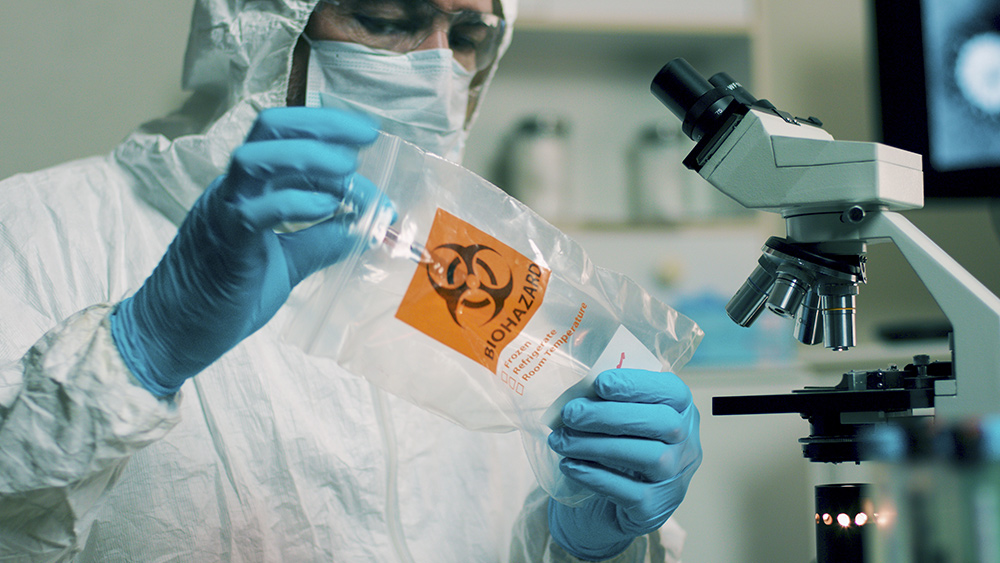FDA now requiring drug companies to be more transparent about side effects in ads
11/30/2023 / By Ethan Huff

The U.S. Food and Drug Administration (FDA) published a final ruling this week about how pharmaceutical companies will be allowed from now on to advertise their drugs directly to consumers.
As you probably know if you have ever watched American television, drug advertising is everywhere. It would seem to be the lifeblood of both the general media and entertainment industries, which makes sense as prescription drugs are now a $1.3 trillion market.
While drug advertising up until now has required that drug companies present the side effects alongside the promotion, the rules have been loose in that most consumers miss the side effects amid all the pretty pictures and the rambling narrator who lists them off as quickly as possible.
From now on, all pharmaceutical ads aimed directly at consumers must clearly, in plain language, present all known health risks so patients can make better-informed healthcare decisions.
(Related: This is the same FDA, by the way, that prevented Americans from taking ivermectin during the Wuhan coronavirus [COVID-19] “pandemic,” despite it being an FDA-approved drug.)
Why are direct-to-consumer drug ads allowed at all?
In its ruling, the FDA stipulated that Big Pharma must now be “clear, conspicuous and neutral” in all drug advertising in lieu of presenting emotional appeals as they currently do, misleading customers about the true attributes of the drug or drug-related service being offered.
“Information must be clear and in a language that is readily understandable by consumers,” the new FDA rules state. “Audio must be understandable in terms of volume, articulation and pacing. Television ads must include text and audio, and the text displayed must match the audio, be shown for long enough and be easy to read.”
“Advertising must not include elements, such as statements, text, images or sounds, that distract from the main message of the ad. Any text used must be large enough and in an easily-readable font. Notably, ads no longer need to explain how a drug works or what its benefits are. Simply listing major side effects and conditions preventing use is sufficient, according to the ruling.”
The ruling is actually an update from an early decision in 2010 stipulating that drug ads need to be presented to consumers in easily understandable language using text that is easy to read – many drug commercials still put the side effects in very small font, very quickly, at the end of the commercial where most people miss it.
It is said that Americans see up to 10,000 ads daily, a truly astounding number. And with something as serious as pharmaceutical drugs available by prescription only being included among them, it is important that consumers get only the most accurate information that does not mislead or trick them.
Big Pharma is notorious for lying to consumers about the safety, or lack thereof, of pharmaceuticals. The FDA would have done well to deal with this problem decades ago, but perhaps it is better late than never?
In 2021, the pharmaceutical industry spent $6.88 billion on direct-to-consumer pharmaceutical ads – ads that are not allowed in many other countries at all, by the way. This sounds like a lot of money, but it is a drop in the bucket for the multi-trillion-dollar pharmaceutical industry, which is arguably the world’s biggest racket.
“There’s a lot at stake when consumers don’t understand contraindications,” one report about the matter explains. “Making those clear protects people accessing telehealth services, which increasingly prescribe remotely.”
“Consumers should always consult doctors and pharmacists first to understand interactions and risks when taking new medications.”
In the comments, others added to this that drug companies have no business advertising their drugs directly to consumers period, suggesting that the practice should be outlawed entirely.
More related news about the FDA can be found at FDA.news.
Sources for this article include:
Submit a correction >>
Tagged Under:
advertising, big government, Big Pharma, conspiracy, corruption, deception, drug cartels, FDA, honest, pharmaceutical fraud, pharmaceuticals, progress, side effects, transparency
This article may contain statements that reflect the opinion of the author
RECENT NEWS & ARTICLES
COPYRIGHT © 2017 CORRUPTION NEWS



















